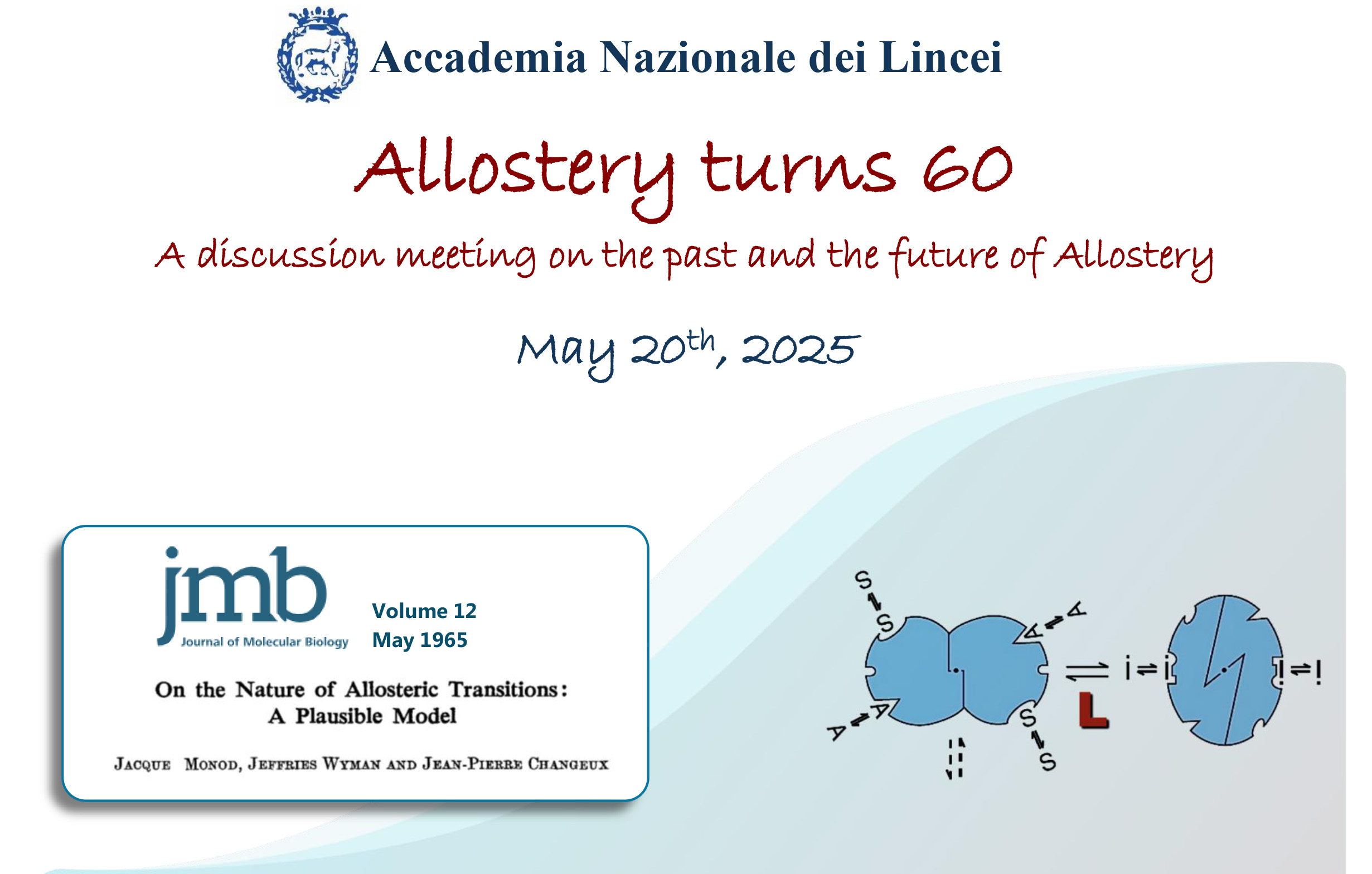Ora inizio giorno: 09:00
Luogo: Roma - Palazzo Corsini - Via della Lungara 10
Sala: Scienze Fisiche
DIRETTA STREAMING
L'attestato di partecipazione viene rilasciato esclusivamente a seguito di partecipazione in presenza fisica e deve essere richiesto al personale preposto in anticamera nello stesso giorno di svolgimento del convegno
The Monod–Wyman–Changeux (MWC) model for allosteric proteins is an elegant and powerful theoretical paper published in may 1965 in the Journal of Molecular Biology with the title: "On the nature of allosteric transitions: a plausible model". The paper represented a remarkable conceptual evolution in the field of biological regulation introducing a conformational selective mechanism to allow enzymes to cope with the ever-changing physiological demands of the cell. The idea emerged from experiments on the control of L-threonine deaminase activity carried out at the Institut Pasteur à Paris by Jean-Pierre Changeux as a PhD student of Jacques Monod. The MWC model, based on rigorous and elegant thermodynamics, has been inspiring many outstanding scientists round the world, and proved remarkably successful as witnessed by the fact that it is presented in Biochemistry & Biophysics textbooks and has been cited more than 10.000 times, possibly a record for a theoretical paper in protein science. Over and above the celebration of the 60th anniversary of the MWC model publication, this one-day Conference will be devoted to a deep discussion on the future of Allostery. The day will begin with a talk by Jean-Pierre Changeux lui-même, and will continue with presentations dealing with applications of the basic concepts to several natural and synthetic proteins and protein complexes; including hemoglobin that has been considered the paradigmatic allosteric protein; over to membrane receptors and brain pathophysiology; the conformational dynamics by time resolved advanced methodologies; bioenergetic’s molecular mechanism and medical relevance of allosteric control.
Apri il PROGRAMMA in formato PDF
Altri allegati:


